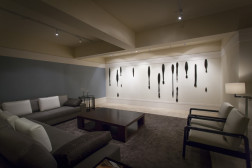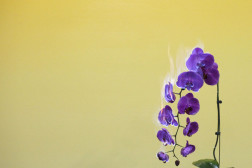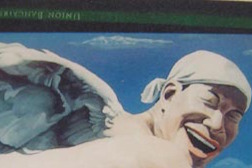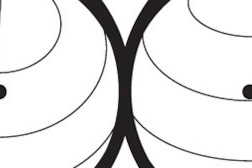


Julika Rudelius in Shanghai, Guangzhou and Wuhan
Style, Rites and Ritual
After her first co-operation with Chen Tong and Libreria Borges Institute for Contemporary Art for the project Other Otherings in Guangzhou, Julika Rudelius’ project is ready to take off in Shanghai, Guangzhou and Wuhan.
She is hosted in Shanghai by Arthub Asia for the coming months. Several activities have been held in the city with the participation of Julika Rudelius, including:
Presentation of Julika Rudelius’ work and a lecture at Rockbund Art Museum
Time: March 24th 2012 from 7:00 to 9:00 pm
Location: 2nd Floor of Rockbund Art Museum
20 Huqiu Road, Huangpu District, Shanghai
The filming for her project is underway. More information to come soon.
We would like to thank Ailing Foundation for their support, as well as Fudan University Institute of Visual arts.
Project Background
Written by Julika Rudelius
The majority of my artworks have been created outside of my country of origin, which is Germany. In Amsterdam, I took on millionaires, Dutch Africans, and Moroccan fashionistas as my subjects. Since relocating to New York City five years ago, my focus has been on groups that exemplify the American image of success and happiness: wealthy denizens of the upscale Long Island Hamptons, powerful politicians, and poster-couples for marital bliss. In all of these works I have the view of an outsider to draw on, with its attendant privileges and handicaps, first as a German ex-patriate in Holland, and then occupying a more generic European foreign-ness in the U.S. Meanwhile, what helped me to develop these works and formed their underlying structure was the language which I shared with my subjects (I am fluent in both Dutch and English), and which I could manipulate with ease. Also, insofar as there is a degree of cohesion to the experiences of people across the West, there was a reasonable amount of cultural overlap as well.
In approaching making a piece in China, I am particularly interested in the absence of this shared language and culture, and in developing a new way of working that is still grounded in the same principles and set of topics that I have been pursuing throughout my body of work. As a foreigner in any country, but particularly in one where you don’t speak the language, it is typical to look for things you identify with or that are at least vaguely in common with your own culture.
Based on some preliminary research, it seems to me that within the strengthening middle class in China, what is shared are the rituals of commercial consumption that are repeated between the two cultures: shopping for designer apparel, attending wine-tastings, re-thinking civil liberties in a way that questions authorities and emphasizes the individual experience over the group. At the same time, I know that while these rituals echo what I am familiar with, I cannot understand them in the same way that they are understood by the people who perform them in this other culture. When I observe a wine-tasting in China, for example, it is on the surface a ritual that I recognize and understand, and yet I can’t know what other meanings that ritual is imbued with from the Chinese perspective or what different associations it may have. This gap in shared understanding is charged by the simultaneous occurrence of both recognition and mis-recognition.
I’d like to use this unique situation to seek out the shared rituals that the globalized free market has brought in common between the West and the developing Chinese middle class and examine them more closely. Without language to give me insight into the underlying psychology of these rituals, I will be left with a more distilled experience of the ritual than I have access to in the West: simply the recognized/mis-recognized gesture, echoing my experience of the same gesture in the West, but also possessing a difference impossible for me to grasp, except in that I know I am not grasping it.
What I understand to be the growing influence of a confident middle-class also brings with it a new dynamic of migration and multiplicity to national identity. To put this notion of diversification into the frame, I am particularly drawn to develop this piece in the city of Guangzhou, whose Hongqiao neighborhood is home to a community of African immigrants. Because in the West our experience of immigration is charged by race, no matter how many generations a Chinese person’s family has been in the U.S., for example, they are still identified with the figure of the immigrant.
Meanwhile, in non-Western countries it seems that a transfiguration of this frame of whiteness still holds: you might describe a white foreigner in China as an “ex-pat,” but the term “immigrant” is still generally reserved for people of color. The influx of people from Africa into Guangzhou and the interface they form with the local culture is another echoed gesture, recognized perfectly by the market and mis-recognized by my Western sensibility as a diaspora of immigrants within a country of immigrants. I feel that working in this city will allow me to tease out these layers to the experience of culture and class, keeping my own perspective self-aware through the awareness of other otherings.




